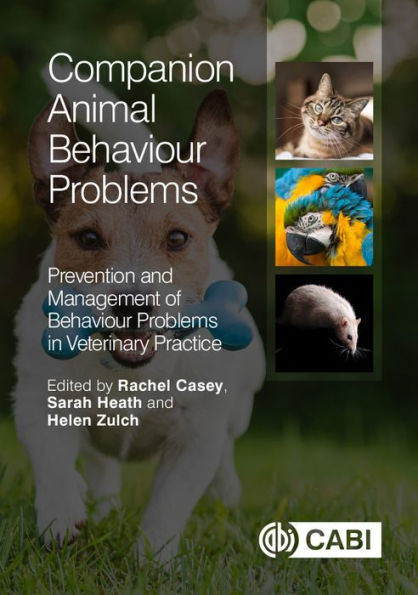Behaviour problems are a significant cause of companion animal relinquishment and euthanasia. This book provides up to date information about animal behaviour as well as practical advice on how veterinary practice professionals can manage undesirable animal behaviour and give down to earth, appropriate and trusted advice to owners. This book: · Covers the important aspects of behaviour in dogs, cats, rabbits and rodents, parrots and birds, as well as how this behaviour has adapted to the domestic environment. · Discusses the role of the veterinary practice in improving the emotional experience of animals attending the veterinary practice, including practice design, socialisation classes for young animals and effective communication with owners. · Covers the clinical decision-making process in managing the signs of undesirable behaviour, appropriately handling pets in the practice to minimise distress, as well as: behavioural first aid, referral to a specialist, medical influences on behaviour and decisions about euthanasia. This practical and accessible book gives all the essential information needed by veterinary professionals in order to advise clients on the behaviour and well-being of animals in their care.
1127588777
Companion Animal Behaviour Problems: Prevention and Management of Behaviour Problems in Veterinary Practice
Behaviour problems are a significant cause of companion animal relinquishment and euthanasia. This book provides up to date information about animal behaviour as well as practical advice on how veterinary practice professionals can manage undesirable animal behaviour and give down to earth, appropriate and trusted advice to owners. This book: · Covers the important aspects of behaviour in dogs, cats, rabbits and rodents, parrots and birds, as well as how this behaviour has adapted to the domestic environment. · Discusses the role of the veterinary practice in improving the emotional experience of animals attending the veterinary practice, including practice design, socialisation classes for young animals and effective communication with owners. · Covers the clinical decision-making process in managing the signs of undesirable behaviour, appropriately handling pets in the practice to minimise distress, as well as: behavioural first aid, referral to a specialist, medical influences on behaviour and decisions about euthanasia. This practical and accessible book gives all the essential information needed by veterinary professionals in order to advise clients on the behaviour and well-being of animals in their care.
46.99
In Stock
5
1

Companion Animal Behaviour Problems: Prevention and Management of Behaviour Problems in Veterinary Practice
352
Companion Animal Behaviour Problems: Prevention and Management of Behaviour Problems in Veterinary Practice
352eBook
$46.99
$62.40
Save 25%
Current price is $46.99, Original price is $62.4. You Save 25%.
Related collections and offers
46.99
In Stock

Product Details
| ISBN-13: | 9781800621312 |
|---|---|
| Publisher: | CAB International North America |
| Publication date: | 09/12/2022 |
| Sold by: | Barnes & Noble |
| Format: | eBook |
| Pages: | 352 |
| File size: | 7 MB |
About the Author
From the B&N Reads Blog
